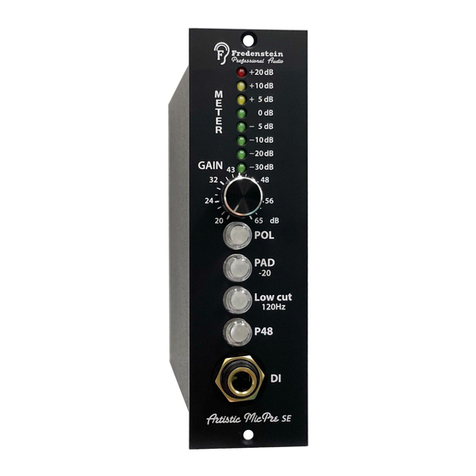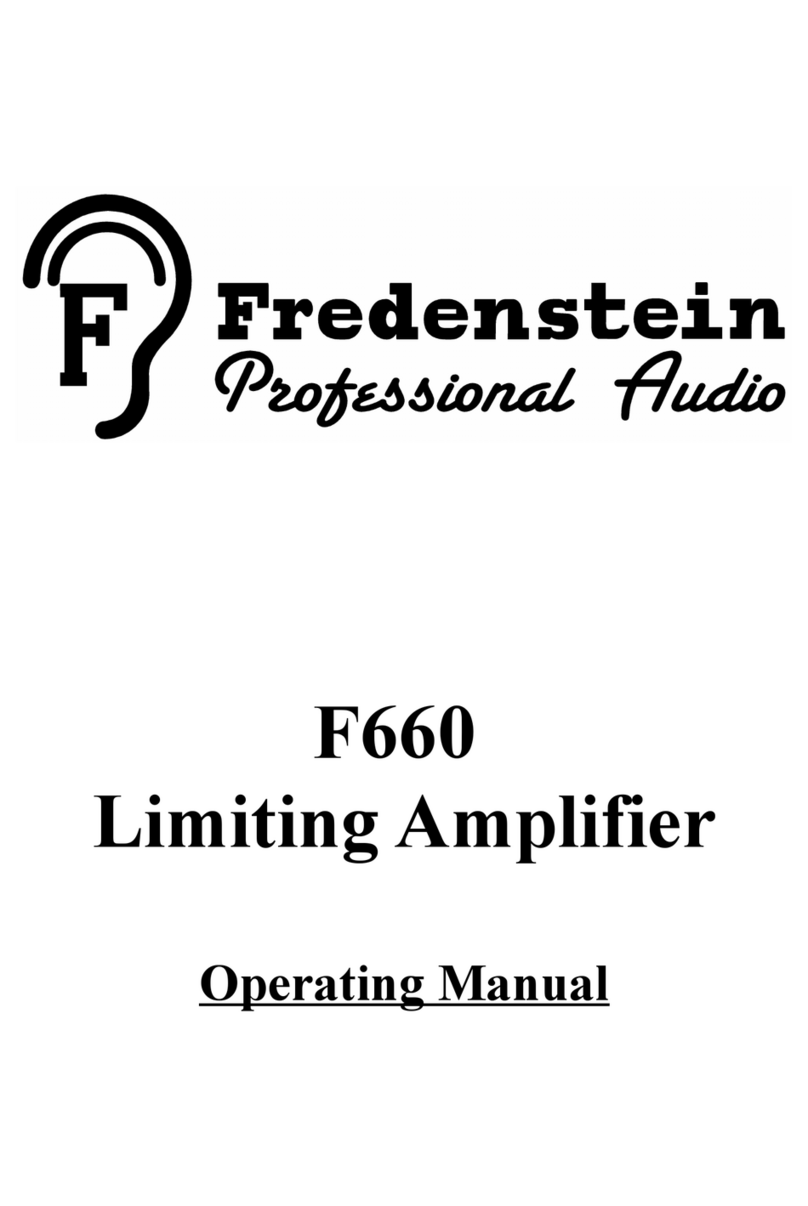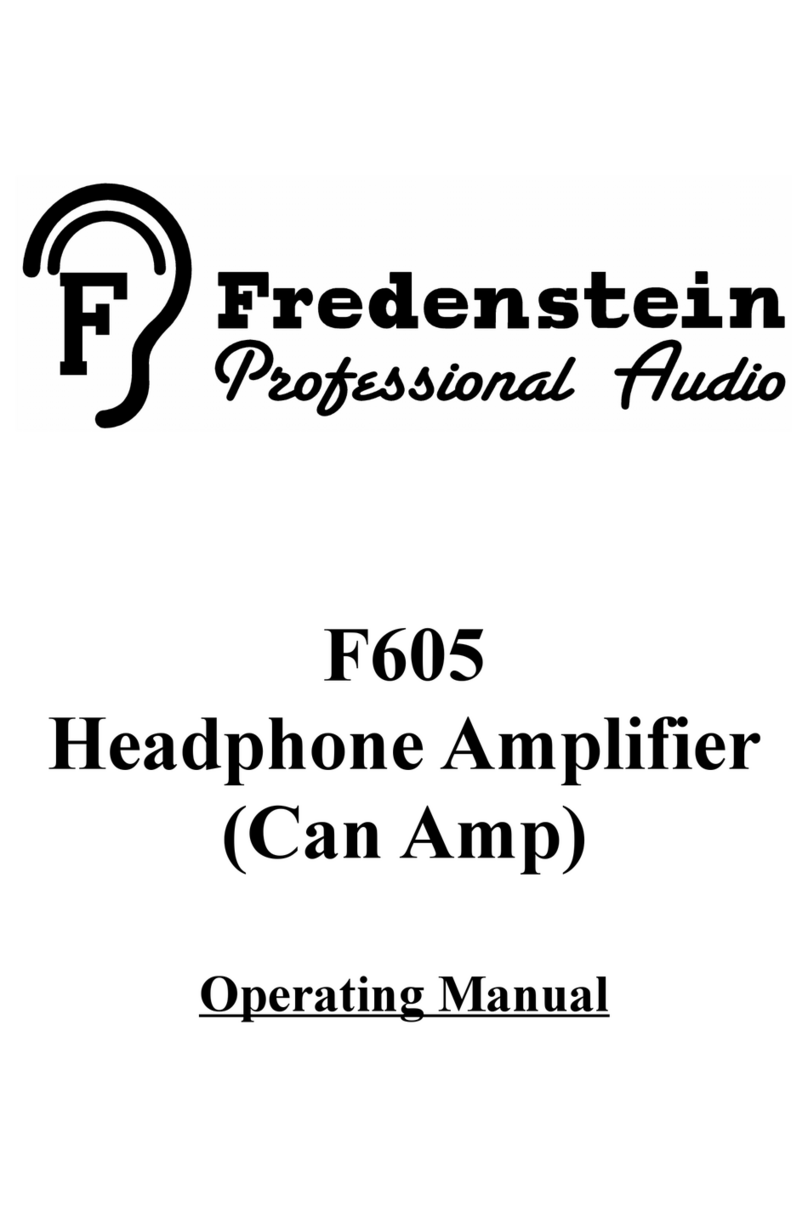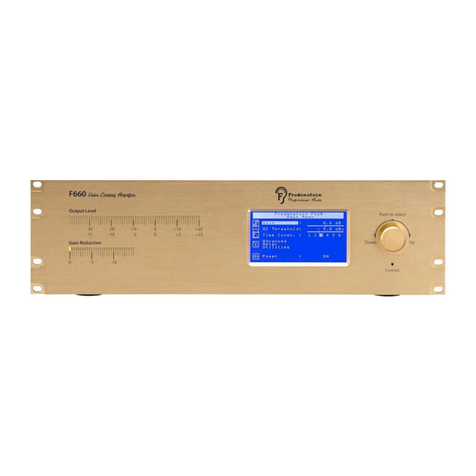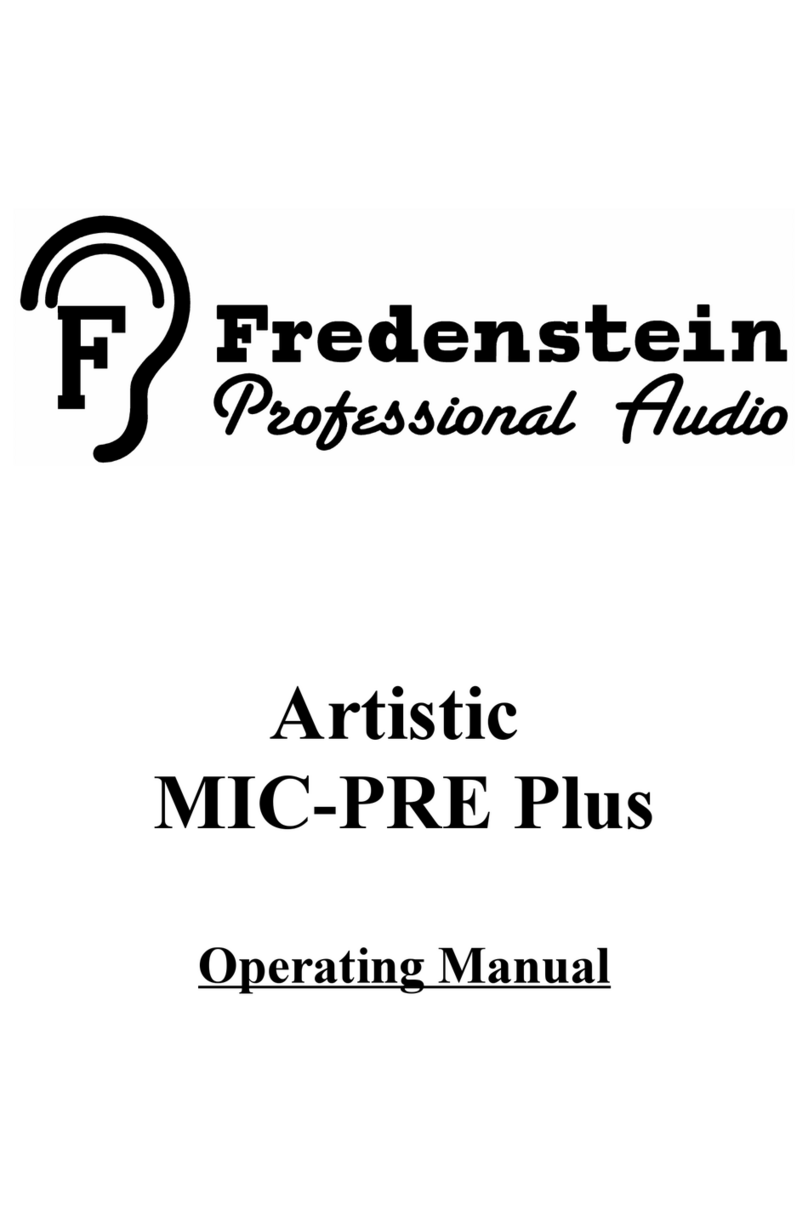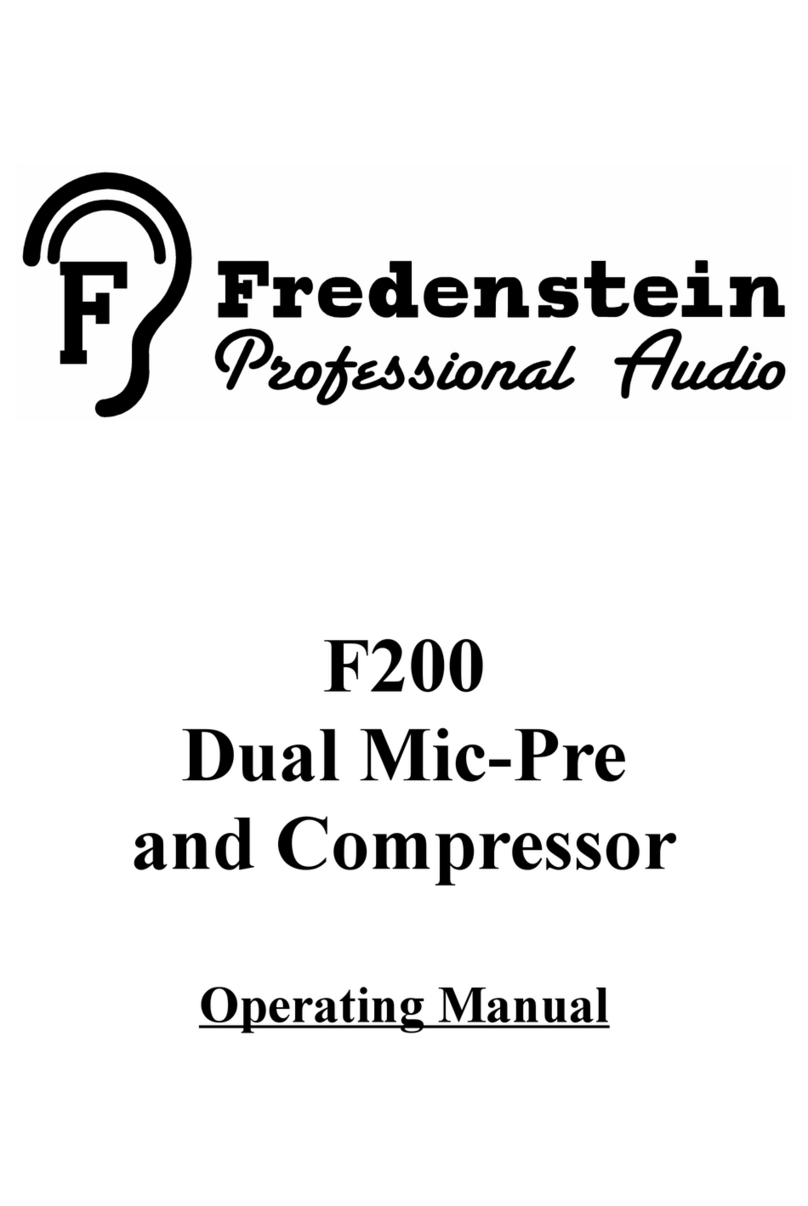Fredenstein HD Reference Preamplifier
The input impedance of the HD Reference is natively 200 Ohms (200,000 Ohms) and can be
reduced to 1KOhm (1000 ohms) or 300 Ohms by activating the LOW-Z functions. With both 1K
and 300 pressed, the input impedance is approximately 230 Ohms. The initial 200 Ohm input
impedance avoids loading the microphone output transformers and yields, in some cases, sonically
superior results. The lower impedance settings tend to increase the damping of dynamic and ribbon
microphones. We suggest that while you are learning this preamp, that you listen while changing
impedance settings. What to listen for, you as ? Passive microphones such as dynamics and ribbon
mics may sound tighter, snappier, dryer or more direct with lower impedance settings, but on the
other hand, you may be more accustomed to those mics sounding a certain way and that is why you
chose to use them, so in those cases probably the higher impedance settings may sound more
familiar. Consider the artistic possibilities and the new flavors you can get from your mic collection.
With some microphones, the transformer inside them comes into play because they may be
optimized for a particular range of impedance's. In those cases, it is li ely that either the 1K or
200K settings may be most appropriate. Generally this translates to differences in the high
frequency response and the “brightness” and the quality of the sibilance (“natural” is usually
preferred). Lastly, some active microphones might conceivably distort a little prematurely into the
300 ohm setting,. On the other hand, consider that most active mics are designed so that the capsule
should distort from sheer SPL first, and there is at least a few dB headroom in the electronics
beyond that, so that scenario is unli ely. In any case, the engineer can switch between the settings to
find the desired result without any fear of damaging the microphone.
Just to complicate matters, the length and capacitance and quality of the microphone cable may be
the biggest factor for the microphone and its transformer to deal with. This too represents an
impedance that the mic needs to drive, and this is an impedance that becomes lower at high
frequencies. For example, a long cable might reduce the benefit of the 200K setting. A typical 10
meter cable capacitance may reduce the impedance to 10 Ohms at 10 Hz and 5 Ohms at 20 Hz.
Phantom powered output amplifiers of microphones do not have a lot of voltage or current to wor
with and is part of the reason why using the HD Reference to drive the long line is preferred.
Another reason is that a line level signal is more immune to RF and interference than a much lower
level mic level signal. Sometimes corrosion on XLR connectors can cause a “diode effect” that can
bloc a low level signal, but a larger signal may clear the bloc age, and of course that is a
simplified description, but hints at one more reason where a remote controlled mic-pre may be an
advantage.
One final note regarding the HD Reference input impedance. Li e virtually all mic pre's that
include Phantom Power, a pair of 6.8 Ohm resistors are bridged across the input to feed enough
current to power the microphone. In the HD Reference, these resistors are removed from the circuit
when Phantom Power is not required, which ma es possible the unusually high 200 Ohm setting.
However, when Phantom Power is needed then the maximum impedance is lowered to about 13
Ohms, due to those resistors, but it is still a high impedance by mic-pre standards. Phantom power
also lowers the 1K and 300 Ohm settings but proportionately much less.
The HD Reference includes a high pass filter or low cut filter with 2 select-able frequencies, 39 Hz
and 82 Hz. The filter is before any active electronics and can certainly help reducing pops and
plosives when used for vocals, but we might suggest that physical pop filters or angling the mic
Fredenstein HD Reference Manual V1.0 Feb 5, 2016 Page 3
